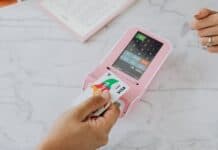When you need to pay for something in cash and don’t have enough small bills, you may need to buy a cashier’s check. A cashier’s check is similar to a personal check but can only be used by the person it is made out to, which makes it safer than just giving someone your check. Cashier’s checks are also acceptable forms of payment for services rendered because many companies won’t accept personal checks or may require a different form of payment. To pay with a cashier’s check, you will need to know what bank the account is with and the exact dollar amount of the check. Read on for more information about how to verify a cashier’s check before using it.
How To Verify A Cashier’s Check?
- Write the monetary amount of the check on a piece of paper. The amount must be exactly what appears in the memo line.
- Write the date of issuance at the bottom of your page, and sign it with your name, address, and phone number (optional).
- Put your name, bank name, and routing number, also known as “street address” on a separate piece of paper. Write it on top of what you wrote in step 1 so that you don’t confuse them when you put them together later on.
- Fold all these pieces of paper into quarters and stick them in an envelope so that they look different from each other but are still easy to read when they are all put together later on.
- Take your cashier’s check out and look at it to make sure you know how much work it is worth before you give it to someone to use for payment for work done or goods bought with it (if allowed by company policy). If there is more than one person listed as a beneficiary, make sure all names are spelled correctly (it’s not unusual for people not to spell their names correctly), or get help from someone who knows both names if they are different than yours; if there is a problem with a check at any point during its life cycle because of wrong spelling errors or oversight by either party in writing up transactions involving the cashier’s check, neither party can use that cashier’s check again without paying a fee.
- Take the cashier’s check to the bank that issued it, and pay for it with a money order (cashier’s checks are not widely accepted). Write “Pay to the Order of” on a line below the bank name where the check was drawn. Check with your bank about how to do this; some banks will only take cashiers’ checks if they are over a certain amount, while others accept them on a case-by-case basis. Some banks will allow you to use your credit card at their teller window if you want to get money into an account right away, but other banks will only accept cashiers’ checks as payment unless they are owed or you have some way of showing that the person listed in the check is authorized to use it (such as authorization by phone or fax).
- Take your money order and give it to whoever is receiving payment before you walk out of their store (it’s usually best just not to question payments when someone offers them anyway!). If there is any trouble using your cashier’s check along the way, call your police department and file a report for fraud; when these cases go through court, there may be legal consequences for giving someone else our personal property without authority.
- When you get back home, use scissors or any other kind of cutting device and cut open your envelope so that all of your paperwork looks like one big package instead of separate pieces; you don’t need to use this package if you can just tear all of the pieces apart and then reassemble them without looking at them. Once all of your documents are in one envelope, put it in a bag and use it as evidence against whoever tried to use your cashier’s check. If there was someone else listed as a beneficiary on the check, be sure to save that person’s driver’s license or other proof of identity for court testimony about their identity.
- Don’t feel too bad about this situation; some companies are worse than others when it comes to having their employees steal from customers! Ask each retailer whether or not they require any kind of photo identification from people who want to buy gift cards with a cashier’s check, and if they do, see if you can get one for court testimony (this will also help with identification for any agencies that come asking after being contacted by the police about a case like this).
Where To Get A Cashier’s Check
- Most likely, you can get a cashier’s check at your local bank or credit union (which may also offer savings accounts, checking accounts, and investments too). Be sure to tell the teller that you want a cashier’s check before you give them your name and address.
- You can also visit an ATM (automated teller machine) and ask the operator for a cashier’s check; make sure this person knows who you are and why you need the check!
- Another option is to look online for companies that offer money orders through e-commerce sites; some of these may allow you to use a payment method other than the standard postal money order (such as a certified or registered cashier’s check). These companies usually charge fees that are much higher than those charged by traditional post offices, so it’s important to ask their customer support representatives why there are significant differences in their fees before deciding which company is best for getting your money order.
- For banks, call the customer service department and ask for a cashier’s check to be sent to you by mail or at the bank’s branch (there may be different procedures in place for each type of business).
- You can also use an online money order company (usually one that allows you to purchase $500 or more at once), though these typical charge fees equal to what someone would pay if they used a standard post office money order
Steps To Verify A Cashier’s Check.
- Write down the amount of the cashier’s check, plus all the information on it (name of the person who is making payment, date of issuance, account number).
- Go to a telephone or Internet service center and pay for your call by using an account number from the cashier’s check as a deposit slip.
- Once you have identified yourself, they will ask if you are calling because you need more information about some way to pay for your purchase (like where you will be buying it) or if you need a more recent version of your signature on file. If it is the latter, they will give you a new version that should help with court testimony in your case involving identity theft!
- Then they should tell you how much money to put in the bank and tell them (they look up on their computer) what kind of checking account number and routing number to put on it before sending it back to them over fax or online mail order.
- When mailing via an online money order company, follow their instructions carefully; this usually involves having someone else mail in return for a receipt that shows that they have received back all their money and information so that authorized representatives can verify the check.
- Once that has been done, if you have been charged an application fee (usually $10 to $20), or if you have to provide a notarized affidavit that there is enough money in the account for the check, then your cashier’s check will be processed within 2 to 3 days.
- If it requires a notarized piece of paper and your bank does not request this (it usually does), then you can mail off the cashier’s check with a cover letter writing out the things to be verified and instructing in what form they need that information in; they will respond with their verification within 5 days or so.
- If it is the first time sending a payment by mail, ask them which type of address information they need and follow their instructions carefully so that this process goes smoothly too!
Summary
A cashier’s check is a type of check that is backed by the bank that issues the check. You can buy a cashier’s check at a bank or online. You can cash a cashier’s check if the amount on the check matches the amount you are being paid for. When you are cashing a cashier’s check, make sure the name and address on the check match your ID. If everything is accurate, the person who gave you the cashier’s check can expect it to be cashed in two to three days.












